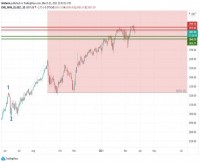|
UCITS for Alternative Investments European UCITS (Undertakings for Collective Investment in Transferable Securities), a framework created in the 1980s towards establishing a unified financial market, has been evolving. The system was extended with UCITS III, which gives funds a European “passport” so that they can be sold anywhere in the EU without further regulatory approval. UCITS III has sophisticated vs. non-sophisticated versions. The sophisticated version accommodates alternative strategies utilizing leverage and short exposure. Managers can use futures and options, hedge fund and financial indices, repurchase agreements and other derivatives. Funds under this umbrella meet investors’ demand for liquidity, transparency and regulatory oversight while allowing some flexibility in the investment strategy. UCITS products are widely recognized and distributed in over 140 countries (table1). To get a better understanding of this type of fund, we turned to Kinetic Partners, Dublin-headquartered providers of services to asset managers and experts in setting up UCITS. Strategies that use futures and options fit the framework, while certain hedge fund strategies do not. “A key feature of UCITS alternatives is that no physical shorting is permitted; instead, shorting must be through a synthetic means such as use of derivatives,” writes John Hamrock of Kinetic Partners, who advises asset managers on compliance and cross-border fund distribution. Further regulatory changes are coming with UCITS IV (table2). In the meantime, different types of alternative investment products have been introduced, including a number of “130/30” or “short extension” funds, according to Mr. Hamrock. New products are in the making. The discussion below is by Killian Buckley, who heads Kinetic Partners’ Dublin office and manages the Irish Stock Exchange Listing service. Many UCITS funds are listed on this exchange. Mr. Buckley’s article was originally published in Kinetic Partners’ newsletter. “Many of our hedge fund clients are attracted to the breadth of product possibilities combined with the regulated hat.” Hedge fund managers are turning their eyes to UCITS III as the elixir the industry needs to bring back spooked investors, tap into wider asset gathering networks and diversify their businesses in such demanding times. Many in the industry of course think of UCITS as a retail distribution vehicle, but the beauty of it is actually the possibility to create a transparent institutional risk-controlled regulated structure, whilst gaining access to the profile and global brand of a UCITS, with the attendant robust and powerful distribution network that an EU passport brings and the strong UCITS links with Asia, Africa and South America. UCITS are distributed in over 140 countries.
Hedge fund managers are noticing this and are further impressed with the range of strategies that are now possible within UCITS III structures. These funds can now invest in money market instruments, derivatives, fund of funds, bank deposits and index tracker funds, to name but a few. This has been achieved with continued guidance from the Committee of European Securities Regulators on the definition of certain “eligible assets” to ensure a consistent interpretation across Europe. UCITS III permits the use of synthetic shorting through derivatives. These rules also effectively allow funds to be leveraged up to 100% and permit funds to enter into credit derivatives such as credit default swaps as a means of increasing revenues. This synthetic shorting possibility has also allowed long/short exposures. A UCITS is free to structure such strategies subject to certain counterparty exposure limits, not exceeding an overall global exposure through the use of derivatives of 100% of Net Asset Value. UCITS III also allows the creation of structured financial instruments through the use of Over-The-Counter derivatives, for example total return swaps, linked to underlying assets such as bonds, currencies or indices, including broadly diversified hedge fund indices. Effectively then, subject to certain diversification and counterparty limits, OTC instruments can be purchased by a UCITS fund. Hedge fund managers, well versed in the art of shorting and derivative based strategies, are now increasingly looking to UCITS III. In a deleveraged world, a framework which provides the possibility of alpha type-returns combined with greater transparency and liquidity, and sound risk controls subject to independent oversight, has a lot of appeal. UCITS as a structural concept is also evolving with guidance coming from various regulators as to the interpretation of certain parts of the Directive; indeed the Irish regulator has recently issued guidance clarifying the absolute Value-at-Risk limit. VaR is now explicitly referenced as 20% of a fund’s NAV specifically for a 20 day holding period, with the additional flexibility to appropriately scale this VaR limit for different holding periods and confidence levels, for example the previous 5% limit for a one day holding period is still maintained. At an EU level there are various discussions continuing to make UCITS more relevant to the industry and to keep pace with the many changes occurring in the industry. For example, consideration is being taken now of such issues as master-feeder structures on a cross-jurisdictional basis. As a living, breathing brand, UCITS continues to evolve and become more popular. Here at Kinetic Partners, many of our hedge fund clients are attracted to the breadth of product possibilities combined with the regulated hat. We are confident we will see an increase in these types of fund launches. UCITS IV | ||||||||||||||||||||||||||||||||||||||||||||||||||||||||||||||||
|
This article was published in Opalesque Futures Intelligence.
|





 RSS
RSS










